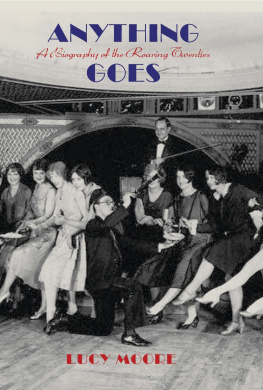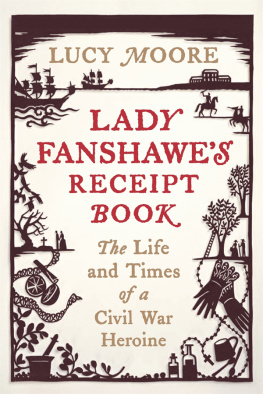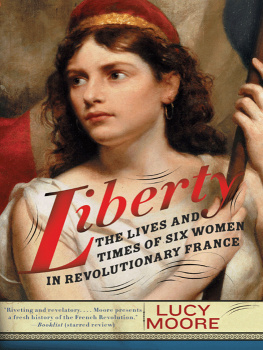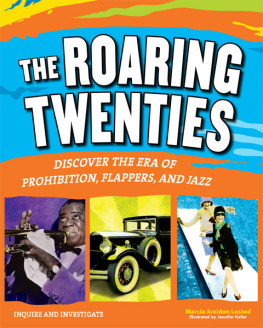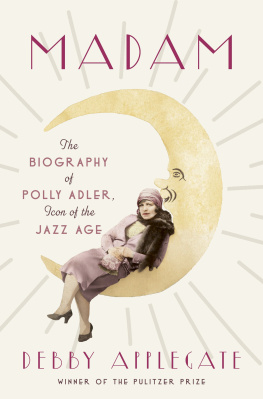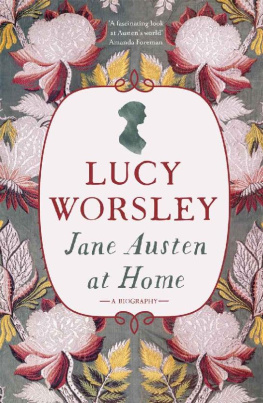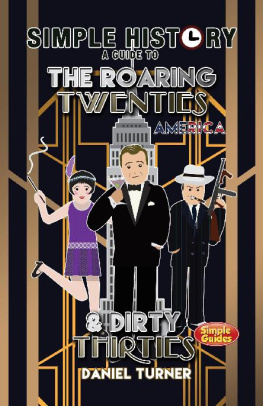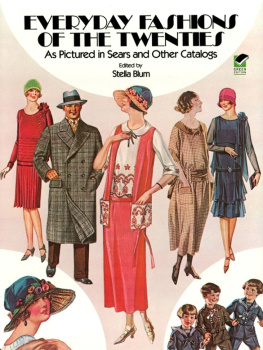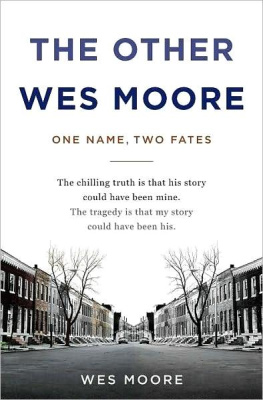ACKNOWLEDGMENTS
My very grateful thanks to Juliet Grames, Meredith Hitchcock, and everyone at Overlook, to Toby Mundy and Atlantic Books in the UK, to Tif Loehnis, Richard Morris and everyone at Janklow and Nesbit, and to my family.
BIBLIOGRAPHY
CHAPTER 1 YOU CANNOT MAKE YOUR SHIMMY SHAKE ON TEA
The best near-contemporary account of Prohibitionand indeed the period as awholeis the journalist Frederick Lewis Allens 1931 Only Yesterday. Professor William Leuchtenbergs 1958 The Perils of Prosperity is another classic but with greater historical context. Among other books listed in the bibliography, I used Laurence Bergreen and John Koblers biographies for my portrait of Al Capone and Thomas Coffeys 1975 The Long Thirst and Herbert Asburys 1950 The Great Illusion for Prohibition.
CHAPTER 2 THE RHYTHM OF LIFE
Kathy Ogrens 1989 The Jazz Revolution: Twenties America and the Meaning of Jazz is the most fascinating account of jazz in the 1920s. Louis Armstrongs memoirs and Chris Albertsons Bessie, with its interviews with Bessie Smiths niece Ruby, were invaluable. Nathan Hugginss account of The Harlem Renaissance and Langston Hughess biography by Arnold Rampersad are good, although the best sources as ever are the primary ones: autobiographical writing, novels and poetry by Hughes, Zora Neale Hurston, Claude Mackay, even Carl Van Vechten, and the broader non-fiction writings and collections of Alain Locke and JamesWeldon Johnson.
CHAPTER 3 FEMME FATALE
Throughout the book I relied heavily on Middletown, the sociologists Robert and Helen Lynds classic study of small town American life in the 1920s, but perhaps it is most relevant to the chapter on women and how their lives were changing during this period. Paula Fasss 1977 examination of American youth in the 1920s, The Damned and the Beautiful, was also useful. Anita Loos and Tallulah Bankhead, both emancipated and ambitious women who exemplified their age almost as much as Zelda Fitzgerald did, wrote memoirs. There have been several joint biographies of Scott and Zelda Fitzgerald, but as far as I know only one, published by Nancy Milford in 1970, on Zelda alonethough the Fitzgeralds stories and novels are the best introduction to their lives.Other evocative popular novels of the period include Edith Hulls The Sheik, Katherine Brushs Glitter, David Garnetts Dope Darling and Warner Fabians Flaming Youth.
CHAPTER 4 FIVE AND TEN CENT LUSTS AND DREAMS
Marion Davies, Charlie Chaplin, Cecil Demille, Gloria Swanson, Lillian Gish and Eleanor Glyn are among many Hollywood luminaries who wrote memoirs, although those of the professional writers like Anita Loos and the journalist Adela Saint John are generally more polished and accessible. Kenneth Angers sensationalist Hollywood Babylon dishes the dirt on Hollywood scandals and Marjorie Rosens 1973 Popcorn Venus explores womens role in the movies. I used Stuart Odermans 1994 biography of Fatty Arbuckle for my account of his rise and fall.
CHAPTER 5 MY GOD! HOW THE MONEY ROLLS IN!
Journalist William Allen White provides the best public portrait of the troubled Warren Harding, while rival Washington hostesses Evalyn McLean (Father Struck it Rich, 1936) and Alice Roosevelt Longworth (Crowded Hours, 1933) give insights into his and Florences private lives. Two books published in 1998 were also helpful: a biography of Edward Doheny (Dark Side of Fortune by Margaret Davis) and, especially, Florence Harding by Carl Anthony.
CHAPTER 6 THE BUSINESS OF AMERICA IS BUSINESS
While I highly recommend Stephen Foxs history of advertising in America (The Mirror Makers, 1984), Robert Laceys Ford: The Men and the Machine (1986) and Vincent Curcios 2000 biography of Walter Chrysler, without doubt the best book on smugly industrious middle-class America is Sinclair Lewiss brilliant 1922 novel, Babbitt.
CHAPTER 7 FEAR OF THE FOREIGN
Sinclair Lewis, a passionate defender of Sacco and Vanzetti, also wrote a semi-fictionalized account of their ordeal, Boston (1928). Another of their defenders, the novelist John Dos Passos, collected information for their defense in Facing the Chair (1927). Sacco and Vanzettis letters were collected in 1927 and republished with a good summary of the trials, evidence and its later ramifications by Penguin Classics in 1997.
CHAPTER 8 THE KU KLUX KLAN REDUX
Henry Frys 1922 expose of the Ku Klux Klans resurgence is still fascinating, though fuller and clearer accounts of the Klans rise and fall in the 1920s can be found in Wyn Wades 1987 The Fiery Cross and Nancy Macleans 1994 Behind the Mask of Chivalry. I found Kathryn Blees 1991 Women in the Klan, a detailed exploration of the role of women in the Klan, particularly interesting.
CHAPTER 9 IN EXILE
Harry Crosbys extraordinary and vivid diaries (published as Shadows of the Sun in 1977) and Caresses later memoirs (The Passionate Years, 1955) are their own testimony. Janet Flanners articles as the New Yorkers Paris correspondent (collected in 2003 as Paris was Yesterday) give a flavor of how Americans experienced Paris in the 1920s, as does Amanda Vaills wonderful 1998 Everybody Was So Young, about Gerald and Sara Murphy. In fiction, Kay Boyles 1934 My Next Bride, though not much of a read, is interesting as a resentful roman a clef about the Crosbys to whom she had once been close, while Ernest Hemingways 1927 The Sun Also Rises is the ultimate novel about Americans in Paris.
CHAPTER 10 THE NEW YORKER
Malcolm Cowleys 1934 Exiles Return gives a good flavor of the literary world in 1920s America, as do old copies of the periodicals of the daythe Saturday Evening Post, the American Mercury, Vanity Fair, Harpers, the Nation and of course the New Yorker. Harold Rosss ex-wife Jane Grant (Ross, the New Yorker and Me, 1968) and his employee and friend James Thurber (The Years with Ross, 1959) both wrote excellent accounts of their lives with him and the New Yorker.
CHAPTER 11 YES, WE HAVE NO BANANAS TODAY
In their different ways, the two best journalistic accounts of the Scopes trial are Joseph Wood Krutchs 1962 More Lives than One and Henry Menckens bitterly funny articles for the Baltimore Evening Sun. The 1997 Pulitzer Prize-winning Summer for the Gods: The Scopes Trial and Americas Continuing Debate over Science and Religion by Edward Larson is a fantastic modern retelling of the events.
CHAPTER 12 THE SPIRIT OF ST. LOUIS
Lindbergh told the story of his flight with passion and eloquence in 1927 with We and in 1953 with The Spirit of St. Louis, which won the Pulitzer Prize in 1954. For an overview of his life, Scott Bergs 1998 biography is unbeatable.
CHAPTER 13 THE BIG FIGHT
Jack Dempsey, Gene Tunney and Georges Carpentier all wrote their own life stories, although I also used Paul Gallicos 1938 memoirs, Farewell to Sport. The best recent accounts of Dempseys rivalry with Tunney are Bruce Evensens 1996 When Dempsey Fought Tunney and an article in the Journal of American Studies 19 by E. J. Gorn, The Manassa Mauler and the Fighting Marine. I was also delighted to find that most of Dempseys fights (as well as footage of Charles Lindbergh) can be found on Youtube.



